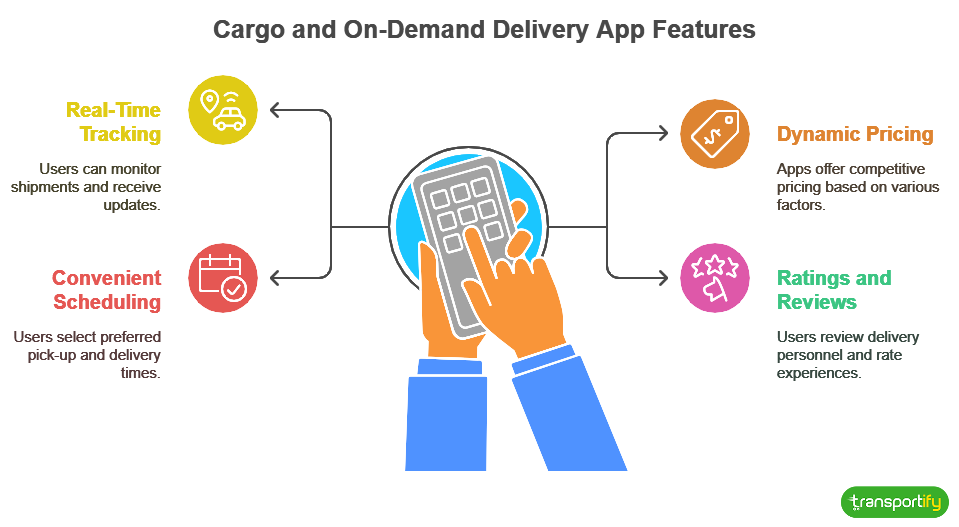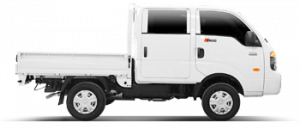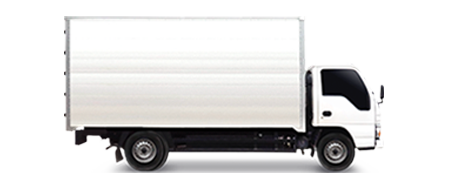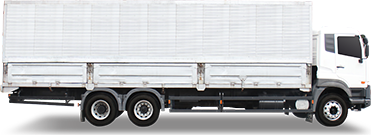
The cargo and on-demand delivery app market is growing incredibly fast. This rapid expansion is completely transforming the transportation and logistics sectors. Businesses need to move goods quickly, while customers expect deliveries at their own convenient time. Everyone wants faster, more efficient services. As a result, the entire industry is racing to keep up and find new ways to innovate.
By 2025, the global on-demand delivery market is expected to surpass $100 billion, reflecting a significant shift in how goods are transported and delivered. This article explores the latest trends in cargo and on-demand delivery. It also covers the app usage patterns that both businesses and consumers can anticipate.
What Are Cargo and On-Demand Delivery Apps?
Cargo and on-demand delivery apps are mobile platforms that let users book transport services for their goods and packages. These apps deliver items straight to wherever customers want them. What sets them apart from traditional delivery services is their focus on speed and immediacy. This makes them particularly attractive to consumers and businesses who need fast logistics solutions. They encompass a range of services, from small parcel deliveries to large freight transport, fundamentally changing the logistics ecosystem.
Key Features of Cargo and On-Demand Delivery Apps

Real-Time Tracking
Users can monitor their shipments and receive updates throughout the delivery process.
Dynamic Pricing Models
Many apps use smart algorithms to set competitive prices. These algorithms factor in current demand, delivery distance, and the size of the cargo being shipped.
Convenient Scheduling
Users can schedule their preferred pick-up time. This gives them much more flexibility in scheduling their shipments.
Ratings and Reviews
Users can review delivery personnel and rate their experiences, fostering accountability and reliability.
What Are the Emerging Trends in Cargo and On-Demand Delivery Apps for 2025?
The cargo and on-demand delivery app landscape is changing fast. Technological advances and rising consumer demands for speed and convenience are driving this evolution. Here are the key trends to watch in 2025:
1. Enhanced Use of Artificial Intelligence and Automation
AI and automation are set to make cargo delivery apps much more efficient. These technologies will optimize delivery routes, improve scheduling, and help predict demand patterns more accurately. Machine learning algorithms can analyze historical data to predict areas of peak demand and adjust resources accordingly.
Supporting Evidence
A Gartner report shows that implementing AI in logistics can cut operational costs by up to 20%. Because of this potential for savings, companies are pouring significant investments into AI technologies. They’re using these tools to make their delivery processes more efficient and cost-effective.
Practical Application
Apps like ShipBob and Convoy utilize machine learning to optimize routes and ensure timely deliveries, thereby significantly improving customer satisfaction.
2. Rise of Electric and Autonomous Delivery Vehicles
Growing environmental concerns and technological advances are making electric and autonomous delivery vehicles more popular. Companies are now prioritizing eco-friendly practices to reduce their carbon footprints. At the same time, they’re working to maintain cost efficiency in their operations.
Current Statistics

A report by Mordor Intelligence indicates that the global electric vehicle market in logistics is projected to reach $85 billion by 2026, with a CAGR of 15.5%. Autonomous delivery vehicles could push this trend even further ahead. These self-driving vehicles would make delivery processes much more sustainable. They’d also create a smaller environmental impact across the board.
3. Increasing Demand for Last-Mile Delivery Solutions
Last-mile delivery, the final leg of the shipping process, has become a focal point for on-demand delivery apps. Consumers want their deliveries faster and more efficient than ever before. This growing demand is pushing companies to come up with new ways to move goods around cities. Urban transportation methods are being completely reimagined to meet these expectations.
Insight
A McKinsey study found that last-mile delivery makes up 53% of total logistics costs. This significant expense is prompting companies to seek more effective solutions. Many are now setting up micro-fulfillment centers to boost efficiency and reduce costs.
4. Integration of Blockchain for Transparency and Security
Blockchain technology is emerging as a powerful tool in improving transparency and security within the cargo and on-demand delivery sector. It enables a decentralized and secure ledger for tracking deliveries, ensuring accountability from sender to recipient.
Case Studies
Companies like IBM and Maersk are already testing blockchain solutions in their shipping and logistics operations. This technology can dramatically cut down on shipment fraud. It also makes delivery services much more trustworthy for customers.
5. Focus on Hyper-Localization and Customization
Consumer preferences are shifting toward hyper-local delivery solutions. These services target the unique needs of specific demographics and regions. Delivery apps are forming more partnerships with local businesses to make this happen. This helps them offer specialized services and create more personalized experiences for their customers.
On-demand apps like Transportify have already begun collaborating with local businesses to offer unique products tailored to specific neighborhoods, allowing them to differentiate their services in a competitive market.
Why Transportify is the Delivery App to Use
Transportify stands out as a premier choice among delivery services, and here’s why.
1. Diverse Delivery Options
Whether you require same-day delivery, scheduled deliveries, or bulk transport, Transportify has vehicles of different sizes available to handle everything from small parcels to large freight.
| Vehicle type | Cargo Dimension | Capacity | Base Price |
|---|---|---|---|
| Vehicle Type | Cargo Dimension | Capacity | Base Price |
| 3.5 x 2 x 2.5 ft | 200 kg | 140 PHP | |
| 5 x 3.2 x 2.8 ft | 300kg | 160 PHP | |
 Canopy Multicab Canopy Multicab | 6 x 4 x 3.6 ft | 600 kg | 225 PHP |
 Small Pickup Small Pickup | 5 x 5 ft x open | 1000kg | 325 PHP |
| 5.5 x 3.8 x 3.8 ft | 600kg | 275 PHP | |
 L300/Van L300/Van | 8 x 4.5 x 4.5 ft | 1000 kg | 335 PHP |
 Bongo Bongo | 7 and 9 ft x 5 ft x open | 1300kg | 985 PHP |
 Closed Van Closed Van | 10 to 14 x 6 x 6 ft | 2000kg to 5000kg | 1450 PHP |
 Open Truck Open Truck | 10 to 14 x 6 ft x open | 2000kg | 1950 PHP |
| 18 x 6 x 7 ft | 7000kg | 4850 PHP | |
 Wing Van Wing Van | 32 x 7.8 x 7.8 ft | 12000kg to 15000kg | 6500 PHP |
2. Enhanced User Experience
A 2022 study by Statista reported that 60% of users abandon an app due to poor usability, highlighting the importance of a user-centric design, which Transportify prioritizes.
3. Cost-Effectiveness
Transportify offers competitive pricing structure that will based on your preferred vehicle, and logistics needs that cater to both individuals and businesses.
4. Sustainability Initiatives
People are becoming more aware of climate change and the need for sustainable practices. Transportify is stepping up as a leader in this area with focused environmental initiatives. The company has optimized its delivery routes to cut down on vehicle travel times. They’ve also started adding electric cars to their fleet. These moves show Transportify’s real commitment to sustainability.
5. 24/7 Customer Support
Customer service is often a weak spot in the delivery industry. But Transportify stands out with its strong customer support system that runs 24/7. Users can get help quickly through chat or phone calls. This means assistance is always there when customers need it most.
6. Business Partnerships and Expansion
Transportify is continually expanding its network by forming strategic partnerships with local businesses and e-commerce platforms. This growth strategy does more than improve delivery capabilities. It also enables the company to provide significantly more comprehensive logistical support to its customers.
Embracing the Future of Cargo and On-Demand Delivery Apps and Their Usage
The expansion of cargo and on-demand delivery apps is part of a broader shift towards immediate and efficient logistics solutions. Businesses and consumers alike will benefit from the enhancements brought about by emerging technologies and changing consumer expectations. As we progress toward 2025, key players in the logistics and delivery sectors must adapt to these trends to remain competitive and relevant.
 | or |




 INSTANT QUOTE
INSTANT QUOTE

 Chat
Chat